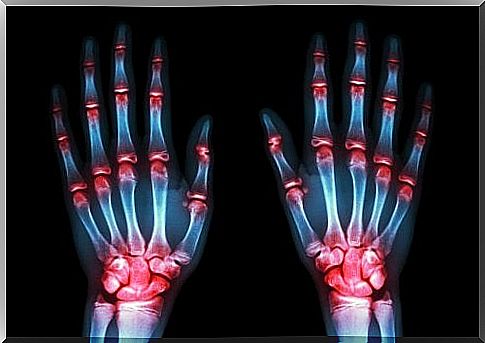How Can You Treat Osteoarthritis?
Early diagnosis is crucial to slowing osteoarthritis, so any medical advances in this area are welcome to improve quality of life.

A specialist from the Menéndez Pelayo International University of Madrid (Spain) assumes that in 5 to 10 years it will be possible to slow down osteoarthritis in order to give those affected a better quality of life.
It is currently almost impossible to treat this chronic disease that makes everyday life difficult, but small scientific advances give us hope.
As experts explain, osteoarthritis is usually diagnosed when a joint is 30% destroyed. If this could be prevented, however, the reality would be very different.
In studies that have been carried out on this topic in recent years, important results have been achieved. Then we will explain to you what progress could be made in a relatively short period of time.
Will it be possible to prevent osteoarthritis from progressing? At least we hope so.
Braking osteoarthritis: a reality that is getting closer and closer
52% of women and 29% of men suffer from osteoarthritis. The first signs of this often appear between 54 and 60, usually following the following pattern:
- Osteoarthritis is very common in the hands (70%).
- The second most common concern is the feet (40%).
- Other affected areas can be knees (10%) and hips (3%).
The World Health Organization (WHO) points out that around 28% of the global population suffers from osteoarthritis. It is estimated that 80% of people over 60 are affected and have problems associated with the disease.
This shows that it is a very common ailment. We all know someone who suffers from it. We also know that many of our readers are struggling with this disease and suffering from it in silence.

The key is early diagnosis
The platform for proteomics of the Institute for Biomedical Research (INIBIC) in La Coruña (Spain) explains that in 5 to 10 years osteoarthritis will be viewed with completely different eyes.
- An early diagnosis will make it possible to curb osteoarthritis.
- A “diagnostic kit” for osteoarthritis is currently being developed. The idea is to identify markers of the disease through a simple blood analysis.
- As we all know, we usually only go to the doctor when we are in pain and “can no longer”. Pain in the hand is very intense and uncomfortable. The hands often fall asleep at night and small deformations occur.
- If the disease is already at this stage, it will be impossible to curb it. So the key is to be able to diagnose markers for osteoarthritis as early as possible.
Proteomic Study
The rheumatologist Francisco Blanco, scientific director of INIBIC explains that the knowledge about arthritis has increased enormously.
- Proteomics is the science that studies proteomes. That is the totality of all proteins in a body.
- The proteomic study of the affected tissues allowed the scientists to identify six biomarkers.
- These markers allow diagnosis of the disease at a very early stage with a 96% certainty.
Early diagnosis makes it much easier to curb osteoarthritis. Experts assume that there will be effective therapies for this in 5 to 10 years.
Osteoarthritis usually follows the same “attack pattern”: certain substances are released that gradually destroy healthy tissue. So if certain active ingredients are injected, the progression could be stopped.

The need to stop osteoarthritis
Osteoarthritis is the most common rheumatic disease and the fourth most common cause of disability. So it is an important, very common ailment, and not just pain that affects the elderly.
Osteoarthritis is often associated with older age, but the truth is that people in active life who suffer from an illness are often affected by it.
- Osteoarthritis reduces the quality of life and mobility.
- It is a very expensive disease: operations, treatments, medicines … If more research were invested, an effective treatment might have been found to stop the disease.
- It is believed, however, that this condition will be diagnosed more frequently in the next few years. Factors such as obesity or excessive exercise accelerate the occurrence of the unpleasant disease.
- Certain genetic markers combined with lifestyle mean that healthy tissue is destroyed over time.
The medical institutions are aware of this problem. Finding effective treatment for osteoarthritis is critical to improving the quality of life for many people.
Because a life with chronic pain and suffering is very difficult, you never get used to it.
We look forward to further information and new developments in this area and will continue to report.









